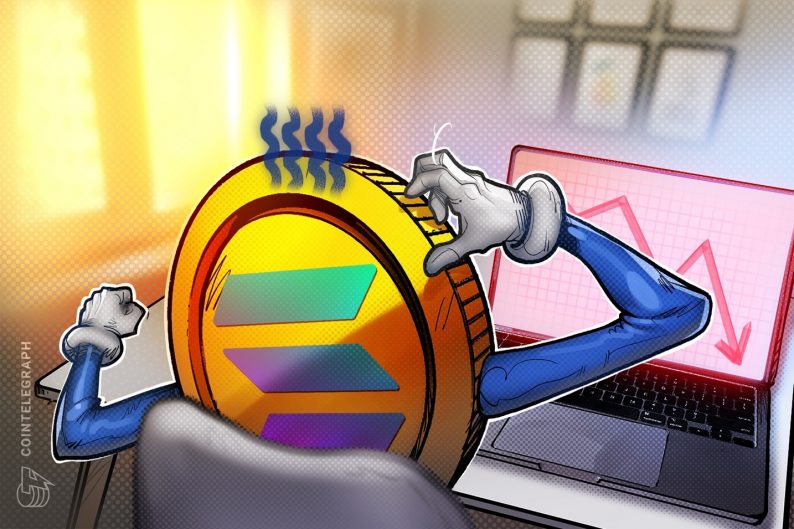The past thirty days have been an extremely bearish time for cryptocurrencies. The sector’s aggregate market capitalization plunged 33% to $1.31 trillion and Solana’s (SOL) downfall has been even more brutal. Currently, SOL has seen a 50% correction and trades at $51.

The low fees delivered by the Solana network have enticed developers and users alike, but the frequent network outages continue to cast doubt on the centralization issue and it has likely scared away some investors.
Pinning the underperformance exclusively to the 7-hour network outage on April 30 seems too simplistic, and it doesn’t explain why the decoupling started a month earlier. According to Solana Labs, the issue was caused by bots initiating numerous transactions on Metaplex, a nonfungible token (NFT) marketplace built on Solana.
The transaction volume surpassed six million per second during its peak, overflowing individual nodes and as a consequence, validators ran out of data memory which led to a loss of consensus and network interruption.
To mitigate the issue, developers introduced three steps: a change in the data transfer protocol, stake-weighted transaction processing and “fee-based execution priority.”
TVL and the number of active addresses dropped
Solana’s main decentralized application metric started to display weakness earlier in November after the network’s total value locked (TVL), which measures the amount deposited in its smart contracts, repeatedly failed to sustain levels above 60 million SOL.



SOL is likely to experience more pain
It’s probably impossible to pinpoint the exact reason for Solana’s price drop, but centralization issues after multiple network outages, a decrease in the network’s Dapps use and fading interest from derivatives traders are three factors contributing to the decline.
The data reviewed in this article suggests that Solana holders should not expect a price bounce anytime soon because the network health metrics remain under pressure. There’s no doubt that Solana Labs has been working to reduce its dependence on the networks’ validators, but at the same time, investors want to avoid centralized projects.
Should the sentiment start to improve, there should be an inflow of deposits, increasing Solana’s TVL and the number of active addresses. As long as these indicators continue to deteriorate, there’s no way to predict a price bottom for SOL.
The views and opinions expressed here are solely those of the author and do not necessarily reflect the views of Cointelegraph. Every investment and trading move involves risk. You should conduct your own research when making a decision.






Leave A Comment